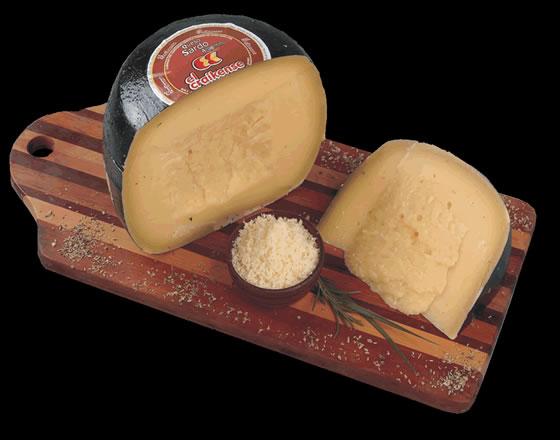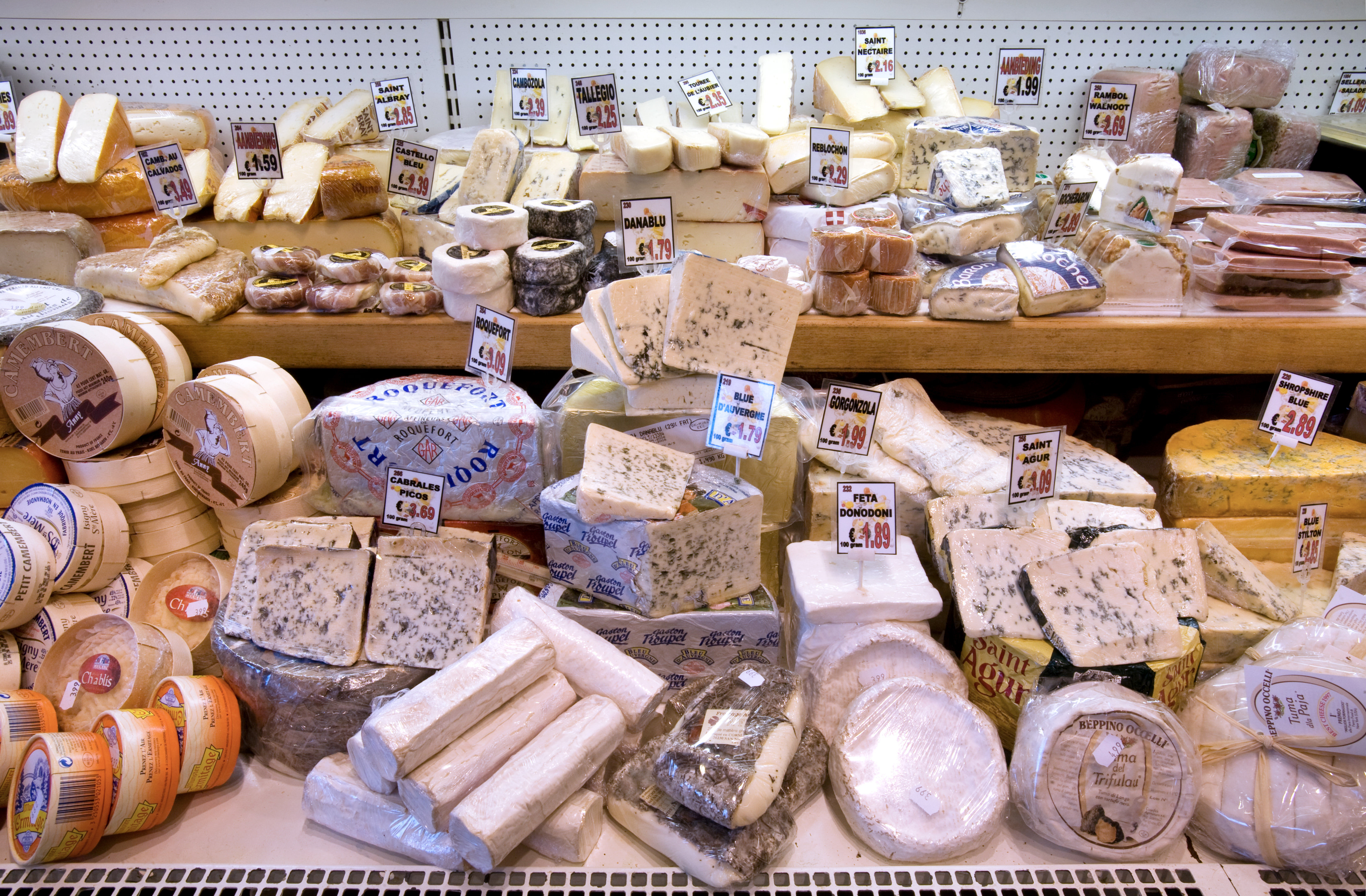|
Pecorino Sardo
''Pecorino sardo'' (; ) is a firm cheese from Sardinia made from sheep milk, specifically from the milk of the local Sarda sheep. It was awarded '' denominazione d'origine'' (DO) status in 1991 and granted protected designation of origin (PDO) protection in 1996, the year in which this European Union certification scheme was introduced. There are two varieties: ''pecorino sardo dolce'', aged for 20–60 days; and ''pecorino sardo maturo'', which is aged more than 2 months. ''Pecorino sardo'' is an uncooked hard cheese, made from fresh whole sheep's milk curdled using calf's rennet. The mixture is salted and poured into moulds. The ''dolce'' weights 1.0-2.3 kilograms, while the ''maturo'' weighs 1.7-4.0 kilograms. The rind varies from deep yellow to dark brown in colour and encases a paste that varies from white to straw-yellow. The sharpness of the flavour depends on the length of maturation. See also * List of Italian cheeses * List of Italian DOP cheeses – food with ... [...More Info...] [...Related Items...] OR: [Wikipedia] [Google] [Baidu] |
Italy
Italy, officially the Italian Republic, is a country in Southern Europe, Southern and Western Europe, Western Europe. It consists of Italian Peninsula, a peninsula that extends into the Mediterranean Sea, with the Alps on its northern land border, as well as List of islands of Italy, nearly 800 islands, notably Sicily and Sardinia. Italy shares land borders with France to the west; Switzerland and Austria to the north; Slovenia to the east; and the two enclaves of Vatican City and San Marino. It is the List of European countries by area, tenth-largest country in Europe by area, covering , and the third-most populous member state of the European Union, with nearly 59 million inhabitants. Italy's capital and List of cities in Italy, largest city is Rome; other major cities include Milan, Naples, Turin, Palermo, Bologna, Florence, Genoa, and Venice. The history of Italy goes back to numerous List of ancient peoples of Italy, Italic peoples—notably including the ancient Romans, ... [...More Info...] [...Related Items...] OR: [Wikipedia] [Google] [Baidu] |
Cheeses With Designation Of Origin Protected In The European Union
Cheese is a type of dairy product produced in a range of flavors, textures, and forms by coagulation of the milk protein casein. It comprises proteins and fat from milk (usually the milk of cows, buffalo, goats or sheep). During production, milk is usually acidified and either the enzymes of rennet or bacterial enzymes with similar activity are added to cause the casein to coagulate. The solid curds are then separated from the liquid whey and pressed into finished cheese. Some cheeses have aromatic molds on the rind, the outer layer, or throughout. Over a thousand types of cheese exist, produced in various countries. Their styles, textures and flavors depend on the origin of the milk (including the animal's diet), whether they have been pasteurised, the butterfat content, the bacteria and mold, the processing, and how long they have been aged. Herbs, spices, or wood smoke may be used as flavoring agents. Other added ingredients may include black pepper, garlic, chives o ... [...More Info...] [...Related Items...] OR: [Wikipedia] [Google] [Baidu] |
Italian Products With Protected Designation Of Origin
This is a list of Italian EU protected geographical indications as defined in the Council of the European Union Regulation CE 510/2006, which fall into three schemes. * 138 Italian products have protected designation of origin (PDO) or DOP () * 83 Italian products have protected geographical indication (PGI) or IGP () * 4 Italian products are traditional speciality guaranteed (TSG). They are: mozzarella and pizza napoletana, amatriciana tradizionale, and vincisgrassi alla maceratese To which they must be added: * 39 Italian products have geographical indication (GI) or IG () PDO, PGI, TSG Sources: Official data of the Italian Ministry of Agriculture updated on 15 February 2011 and of thQuality schemes explainedon the Europa.eu website. of GI List of GI products, pursuant to Annex III of thLegislative Resolution of the European Parliament n ° P6-TA-2007-0259 of 19 June 2007 "on the proposal for a Regulation of the European Parliament and of the Council relating to the de ... [...More Info...] [...Related Items...] OR: [Wikipedia] [Google] [Baidu] |
Sheep's-milk Cheeses
Sheep milk is the milk of domestic sheep. It is commonly used to make cultured dairy products, such as cheese. Some of the most popular sheep cheeses include feta (Greece), pecorino romano (Italy), Roquefort (France) and Manchego (Spain). Sheep breeds Specialized dairy breeds of sheep yield more milk than other breeds. Common dairy breeds include: * East Friesian (Germany) * Sarda (Italy) * Lacaune (France) * British Milk Sheep (UK) * Chios (Greece) * Awassi (Syria) * Assaf (Israel) * Zwartbles (Friesland, Netherlands) In the U.S., the most common dairy breeds are the East Friesian and the Lacaune. Meat or wool breeds do not produce as much milk as dairy breeds, but may produce enough for small amounts of cheese and other products. Milk production period Female sheep (ewes) do not produce milk constantly. Instead, they produce milk during the 80–100 days after lambing. Sheep naturally breed in the fall, which means that a majority of lambs are born in the wint ... [...More Info...] [...Related Items...] OR: [Wikipedia] [Google] [Baidu] |
Sardinian Cheeses
Sardinian refers to anything related to the Mediterranean island of Sardinia. More specifically it can refer to: *Sardinians, the ethnographic group indigenous to Sardinia *History of Sardinia *Sardinian language *Sardinian literature *Music of Sardinia *Cuisine of Sardinia *Sarda sheep The Sarda is an Italian breed of domestic sheep indigenous to the Mediterranean island of Sardinia. It is raised throughout the island, in some regions of mainland Italy, and in some other Mediterranean countries, particularly Tunisia. It i ..., a breed sometimes known as the Sardinian sheep {{disambig Language and nationality disambiguation pages es:Sardo gl:Sardo it:Sardo ... [...More Info...] [...Related Items...] OR: [Wikipedia] [Google] [Baidu] |
Pecorino
Pecorino is an Italian hard cheese produced from sheep's milk. The name derives from , which means ' sheep' in Italian. Overview Of the six main varieties of pecorino, all of which have protected designation of origin (PDO) status under European Union law, is probably the best known outside Italy, especially in the United States, which has been an important export market for the cheese since the 19th century. Most is produced on the island of Sardinia, though its production zone also includes Lazio and the Tuscan provinces of Grosseto and Siena. Ancient Roman authors wrote about this cheese and its production technique. The other five mature PDO cheeses are the from Sardinia (''casu berbeghinu'' in Sardinian language); , whose production was already attested by Pliny the Elder in his '' Natural History''; (or ''picurinu sicilianu'' in Sicilian) from Sicily; from Basilicata; and ''pecorino crotonese'' from province of Crotone, in Calabria Calabria is a Reg ... [...More Info...] [...Related Items...] OR: [Wikipedia] [Google] [Baidu] |
Sardo
Sardo is a hard, grating cow's milk Argentine cheese that is similar to ''pecorino romano'', although the latter is made from sheep's milk and is sharper. Sardo comes from Argentina, and is not to be confused with '' pecorino sardo'', another Italian sheep's cheese. Sardo is traditionally coagulated by animal rennet. Its flavor is mellow, yet rich, and lightly salty. It is white-yellowish in color and is sold in blocks of about . Sardo cheese meets the U.S. Standards of Identity for cow's milk. See also * List of cheeses This is a list of cheeses by place of origin. Cheese is a milk-based food that is produced in wide-ranging flavors, textures, and forms. Hundreds of types of cheese from various countries are produced. Their styles, textures and flavors dep ... References {{Argentine cheeses Argentine cheeses Cow's-milk cheeses pt:Sardo ... [...More Info...] [...Related Items...] OR: [Wikipedia] [Google] [Baidu] |
List Of Italian PDO Cheeses
A list is a set of discrete items of information collected and set forth in some format for utility, entertainment, or other purposes. A list may be memorialized in any number of ways, including existing only in the mind of the list-maker, but lists are frequently written down on paper, or maintained electronically. Lists are "most frequently a tool", and "one does not ''read'' but only ''uses'' a list: one looks up the relevant information in it, but usually does not need to deal with it as a whole".Lucie Doležalová,The Potential and Limitations of Studying Lists, in Lucie Doležalová, ed., ''The Charm of a List: From the Sumerians to Computerised Data Processing'' (2009). Purpose It has been observed that, with a few exceptions, "the scholarship on lists remains fragmented". David Wallechinsky, a co-author of ''The Book of Lists'', described the attraction of lists as being "because we live in an era of overstimulation, especially in terms of information, and lists help us ... [...More Info...] [...Related Items...] OR: [Wikipedia] [Google] [Baidu] |
Rennet
Rennet () is a complex set of enzymes produced in the stomachs of ruminant mammals. Chymosin, its key component, is a protease, protease enzyme that curdling, curdles the casein in milk. In addition to chymosin, rennet contains other enzymes, such as pepsin and a lipase. Rennet has traditionally been used to separate milk into solid curds and liquid whey, used in the production of cheeses. Rennet from calves has become less common for this use, to the point that less than 5% of cheese in the United States is made using animal rennet today. Most cheese is now made using chymosin derived from bacterial sources. Molecular action of rennet enzymes One of the main actions of rennet is its protease chymosin cleaving the kappa casein chain. Casein is the main protein of Milk#Proteins, milk. Cleavage removes the slightly negatively charged glycomacropeptide (GMP) from the surface of the casein micelle. Because negative charges repel other negative charges, the GMP prevents casein micell ... [...More Info...] [...Related Items...] OR: [Wikipedia] [Google] [Baidu] |
Sardinia
Sardinia ( ; ; ) is the Mediterranean islands#By area, second-largest island in the Mediterranean Sea, after Sicily, and one of the Regions of Italy, twenty regions of Italy. It is located west of the Italian Peninsula, north of Tunisia and 16.45 km south of the French island of Corsica. It has over 1.5 million inhabitants as of 2025. It is one of the five Italian regions with some degree of Autonomous administrative division, domestic autonomy being granted by a Regions of Italy#Autonomous regions with special statute, special statute. Its official name, Autonomous Region of Sardinia, is bilingual in Italian language, Italian and Sardinian language, Sardinian: / . It is divided into four provinces of Italy, provinces and a Metropolitan cities of Italy, metropolitan city. Its capital (and largest city) is Cagliari. Sardinia's indigenous language and Algherese dialect, Algherese Catalan language, Catalan are referred to by both the regional and national law as two of ... [...More Info...] [...Related Items...] OR: [Wikipedia] [Google] [Baidu] |
Types Of Cheese
There are many different types of cheese, which can be grouped or classified according to criteria such as: length of fermentation, texture, production method, fat content, animal source of the milk, and country or region of origin. These criteria may be used either singly or in combination, with no method used universally. The most common traditional categorization is based on moisture content, which is then further narrowed down by fat content and curing or ripening methods. The combination of types produces around 51 different varieties recognized by the International Dairy Federation, over 400 identified by Walter and Hargrove, over 500 by Burkhalter, and over 1,000 by Sandine and Elliker. Some attempts have been made to rationalize the classification of cheese; a scheme was proposed by Pieter Walstra that uses the primary and secondary starter combined with moisture content, and Walter and Hargrove suggested classifying by production methods. This last scheme results in 18 ... [...More Info...] [...Related Items...] OR: [Wikipedia] [Google] [Baidu] |




